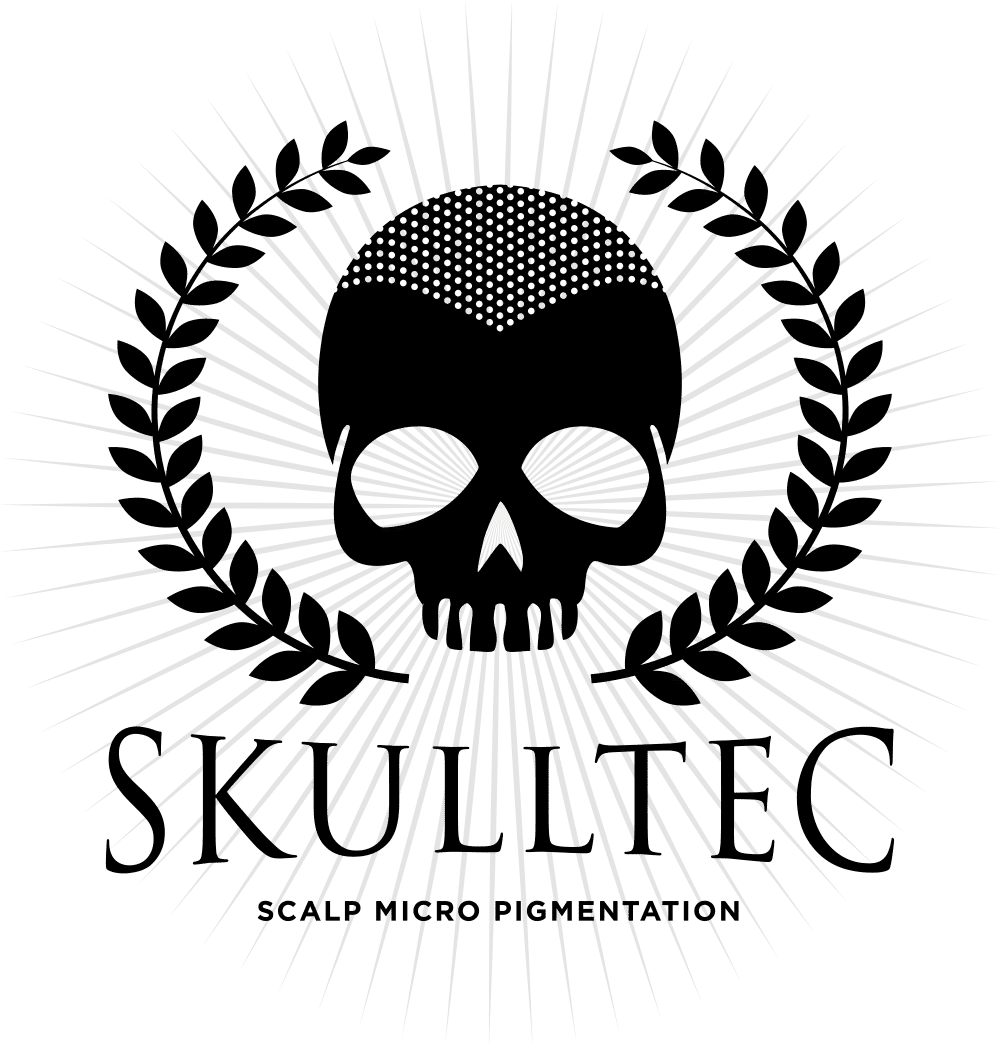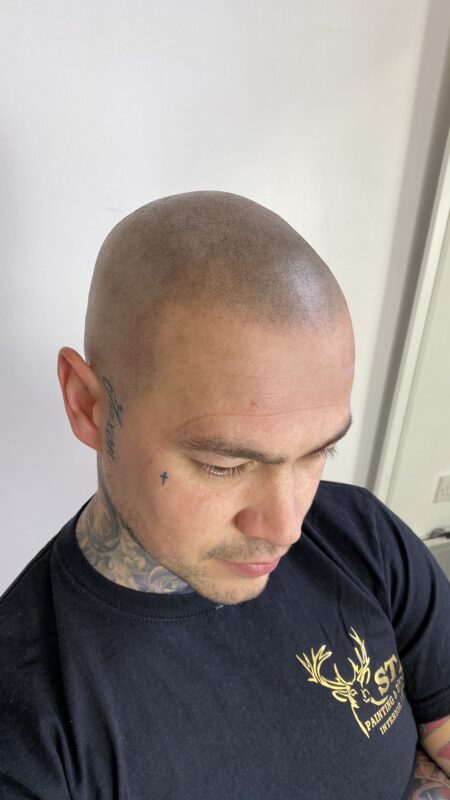Many people think that because scalp micropigmentation is technically a tattoo, any tattoo or permanent makeup artist can do it without any specialised training. The issue is that these novice businesses attempt to model their approach to scalp micropigmentation after a permanent cosmetics or tattooing process. They go out and buy tattoo ink or permanent cosmetics pigment and utilise the same procedure to apply it to their test subject. The main resemblance between scalp micropigmentation and tattooing is that both techniques insert pigment into the skin using a machine, but that is about where the similarities end.
The replication of hair follicles is a specialty of scalp micropigmentation artists. This is a very specialised field that requires a lot of patience and skill. Tattoo artists insert colour deep inside the dermal layer, whereas scalp micropigmentation practitioners insert colour just beneath the epidermal layer, in the papillary layer of the dermis. The tattoo’s replication of hair follicles seems more realistic because it doesn’t penetrate the skin as deeply. Another issue is dot size. Your head will wind up covered in enormous dots if the ink is applied too thoroughly, which is typical of all unskilled artists. Due to its proximity to the skin’s surface and the ongoing turnover of skin cells, the pigment used in scalp micropigmentation will eventually fade, but it will still endure for 3 to 5 years before needing to be touched up. Tattoo artists utilise a different type of pigment than those who perform scalp micropigmentation. Before being implanted into the skin, the pigment used in scalp micropigmentation is manufactured from natural components and is extensively diluted. In contrast to scalp micropigmentation, tattoo pigment is derived from metals like iron oxide and is deposited into the skin when it is very concentrated, which is why tattoos transform to a blue/green colour over time. Permanent makeup pigment and scalp micropigmentation pigment differ in that permanent makeup pigment is composed of a combination of numerous different colours to produce a hue, some of which are organic and some of which are not. Scalp micropigmentation pigment is black and carbon-based; it is lightened and diluted to better match natural hair follicles.
Scalp micropigmentation performed by untrained tattoo artists is almost certain to be what we refer to as a “botched work.” Because hair follicle replication is difficult because they are so small, a microneedle is employed. Tattoo artists frequently utilise the incorrect tools for scalp micropigmentation, which results in some really unattractive results.
How is the repair of scalp micropigmentation performed?
There are several ways to fix incorrect scalp micropigmentation.
Salabrasion
To erase tattoos, salabrasion employs salt imbedded in severely damaged skin. It is frequently performed by incorporating a saline solution with a high salt content using a tattoo gun’s multi-needle “shading” attachment. Then, until a scab forms and comes off, the wound must be kept absolutely dry. The tattooed region is now a little bit lighter since some of the ink from the tattoo is still in the scab. The end result is frequently a scar that is paler in colour than the original tattooed region. Given that this procedure may cause pain, an anaesthetic is occasionally provided.
Adding Color
When attempting to correct a subpar Scalp micropigmentation surgery, nearly all tattoo artists and permanent cosmetic artists have only one choice: adding more pigment. To try to correct it, they can only add additional pigment. Your experience with this kind of fix will simply make you more frustrated if your hairline is incorrect or the pigment is the incorrect colour. You must remove pigment and old scalp micropigmentation in order to effectively address the issue of poor scalp micropigmentation.
Laser Tattoo Elimination
The best solution for eliminating a subpar scalp micropigmentation job is to laser-remove the tattoo. Controlled removal and fading can be accomplished using medical-grade lasers, exact targeting methods, a choice of wavelengths, multiple spot sizes, and power levels. The entire scalp, smaller isolated patches, hairlines, and even single dots can be repaired in this method. This makes it possible to remove excess density, fade darker patches or sections, and straighten hairlines and side profiles.
Scalp micropigmentation results are only as good as the technicians doing the actual treatment. However, there is assistance available if you are among the unfortunate and require repair; Our clinic Skulltec Southwest carry out repairs to a high degree, leaving the distraught person content and full of confidence.
BOOK YOUR REPAIR NOW
